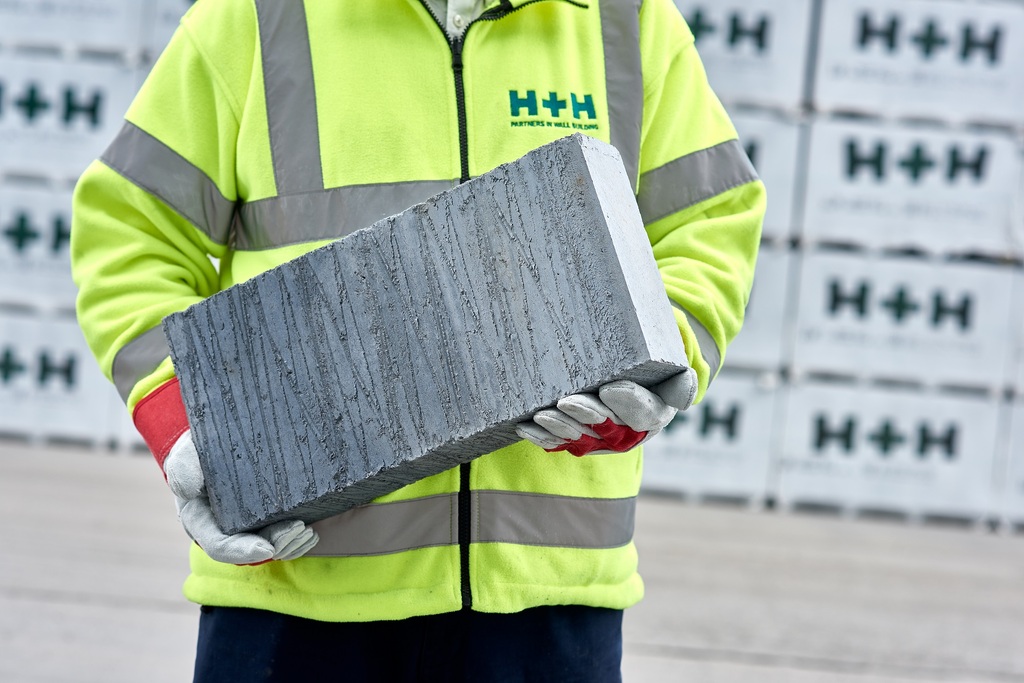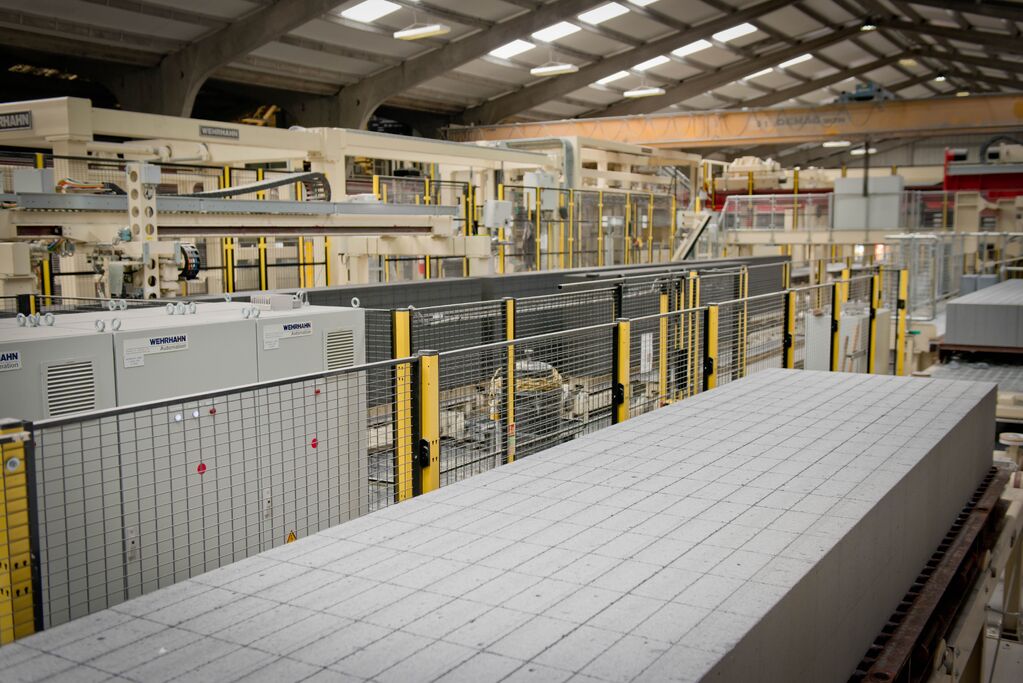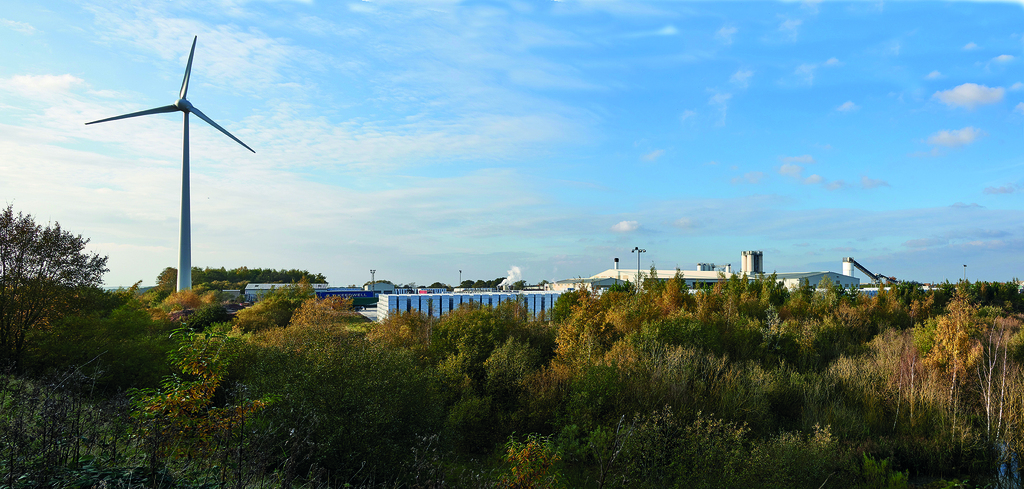News & Markets
Mastering the zero carbon challenge
Driving forward into a sustainable future
Loading...The drive to develop more sustainable building methods involves two connected, but individual goals. The first is to minimize the environmental impact of homes in use. Heating is estimated to account for around 17% of all the UK’s CO2 emissions and building regulations in England and Wales require ever higher standards of thermal efficiency to keep this number down.
The second emerging focus is on embodied carbon with investors and clients setting exacting targets to reach net zero carbon, and requiring the supply chain to work in harmony to reach those goals.
Meeting new Regulations
A revised Document L of the building regulations in England came into force this year, requiring greater airtightness and a lower U-value for external walls. H+H was quick to issue technical design details illustrating how the higher U-value requirement can be made without increasing the width of cavity wall construction and was also able to make a series of Psi-value calculations available to ensure the impact of thermal linear bridging is correctly factored into designs.
To provide a real-life demonstration of the efficacy of AAC in modern building performance, H+H was keen to support Project 80 – a collaboration between Birmingham City University and Midlands Heart Housing Association. The plan is to build 80 homes that meet or exceed the Future Homes Standard for 2025 using a variety of methods, materials and technologies to see which produce the best results and at what cost.
Energy efficiency standards required by the Future Homes Standard are met by a combination of high fabric efficiency and low carbon heating. The technologies being trialled include air source heat pumps, solar panels, MVHR and more.
H+H was happy to supply its Celcon Blocks for the first phase of this project, which focused particularly on a “fabric first” approach to meeting exceptionally high energy efficiency standards. The first phase is now complete, with initial evaluation measuring the performance of the homes when occupied.
So far, the homes built with H+H blocks are showing a reduction of 85% in carbon emissions against the 2013 building regulations, demonstrating that the specification of the Future Homes Standard can be met or surpassed using traditional construction methods.

Embodied carbon goals
Constructing buildings that use very little energy to run is one side of the sustainability discussion. The other, which is becoming increasingly significant, is to reduce the carbon emissions associated with product manufacturing and assembly.
The timetable is being set by the end customers – and most of the major housebuilders in the UK are setting target dates for meeting zero carbon goals. These can naturally only be achieved if the supply chain works together to drive down the carbon emissions associated with each stage of the process.
H+H was quick off the mark with its own zero carbon agenda, with H+H International announcing that its target is to be net zero in operation by 2050. Meeting that target involves setting clear directions to drive down emissions associated directly with H+H’s own manufacturing operations (Scope one and Scope two emissions) and working closely with its suppliers, supporting their plans to eliminate emissions.
Of the total embodied carbon associated with each H+H AAC block, some 85% is attributable to the raw materials – chiefly cement and lime used in the manufacturing process. This does not absolve H+H from taking action to reduce emissions from its own operations and the company is undertaking multiple projects to do just this. It has set an ambitious 2030 target to reduce Scope one and two emissions by 46% compared to a baseline of 2019 figures.
The most significant step being taken to reach this goal is a considerable investment in the UK factories, to improve the efficiency of the gas burners. In 2022 new gas burners were installed at the Pollington plant, replacing the previous 21-year-old models. These gas burners are an integral part of the boiler system used to generate the steam used in the autoclaves. So far, the new burners have shown a significant reduction in gas usage, saving up to 4% in consumption, equating to a reduction in annual CO2 emissions of over 6000 tonnes.

Preparing for future developments, the company has ensured that the new burners are compatible with hydrogen as a base fuel and is already in discussions with local government in the Yorkshire region about the possible development of a hydrogen facility to power local businesses.
While the gas burners are the largest contributors to the Scope one and Scope two emissions, H+H UK is nevertheless examining each area of its operations and introducing changes to further increase the emissions reduction.
The Pollington plant in Yorkshire benefits from a wind turbine which in 2022 provided 20% of the entire UK electricity requirement. From 2023, in addition, 100% of the electricity needed to manufacture Celcon Blocks will be provided by renewable energy sources while the company policy on vehicles is to replace with electric vehicles wherever possible.
Even replacing lighting with more energy-efficient LED sources is having an impact. This move alone is reducing electricity usage by 200,000 kWh/year, saving 41.4 tonnes of carbon from being released into the atmosphere.
Reducing waste, harvesting rainwater and encouraging biodiversity around H+H´s plants all add to the all-round approach to developing a more sustainable business model, allowing the company to make a positive contribution to the zero carbon ambitions of its customers.


Scope 3 emissions
In common with all other manufacturers, H+H is part of a supply chain and working with suppliers to support their own zero carbon journeys. For AAC blocks, the main focus is around cement and lime and the company is pleased to report the real progress being made by its key suppliers to the introduction of new technologies and innovative solutions to the challenge of net zero.
H+H is under no illusions about the scale of the zero carbon challenge, but H+H International and the UK business are aligned in setting ambitious targets that are also realistic and achievable. The company will be reporting regularly on progress, with the next H+H International Sustainability Report due to be published in Spring 2023.